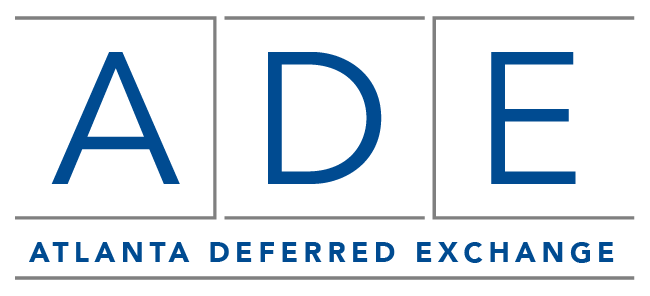
The 1031 process has a number of rules and regulations critical to its success. By using the services of a qualified intermediary, most exchangers are blessedly unaware of a number of them as the needed documents have already been crafted and tailored to abide by the rules. However, frustration can arise when exchangers misunderstand the rules governing when the Qualified Intermediary can release exchange funds to them during the exchange period. If an exchange goes south because an attractive replacement property slips away, or if an exchanger has reinvested all they can, when can the remaining funds be returned to them?
When the IRS issued guidance in 1991 on exchange transactions done on a delayed basis using a QI, they stipulated that the taxpayer must not have the right to receive, pledge, borrow or otherwise obtain the benefit of the funds during the exchange period. (The exchange period begins on the day the relinquished property closes and continues for 180 days, or until the taxpayer’s tax return is due, whichever comes first.) Additionally, they indicated that the QI could only release the exchange funds—-prior to the end of the exchange period—- under five specific conditions:

If the exchanger doesn’t identify property within 45 days; or
The earlier of 180 days or the tax-reporting deadline (including extensions); or
In order to fund the acquisition of identified property; or
If the taxpayer has identified replacement property, but experiences a material and substantial contingency beyond their control: or
If the taxpayer has received all the property they are entitled to under the exchange agreement.
In summary, the IRS allows the release of funds on the 46th day when an exchange fails (due to a lack of ID), on the 181st day when the exchange period ends, anytime during the exchange period to fund the acquisition of properly identified replacement property, when there is a “material and substantial contingency beyond the taxpayers control”, or when they have received all the property they are entitled to under the exchange agreement. Since 1991, additional guidance from the IRS, supported by a subsequent tax court case, has made it clear that these stipulations must be contained in the Exchange Agreement and followed by both the exchanger and QI.
In PLR 200027028, the taxpayer asked the IRS to rule that the following two situations met the standard to be a “material and substantial contingency beyond the taxpayers control” (the 4th condition above) which would then allow the release of exchange funds prior to the end of the 180 exchange period. In the first instance, the exchanger had identified property and was past the 45-day ID period. They had diligently pursued the acquisition of the identified property but were unsuccessful in reaching a contract agreement with the seller. In the second instance, the taxpayer identified 3 properties, needing to acquire all three to fully reinvest the exchange proceeds. The taxpayer pursued all three properties, but was only successful in negotiating contracts and closing on two of the three, leaving unused proceeds remaining. Despite the good faith shown by the taxpayers in attempting to complete their exchanges, the IRS held that neither of their conditions met the intended meaning of a “material and substantial contingency beyond the taxpayers control.” To clarify, the IRS restated their example of what does meet that standard. They cited a contract — subject to zoning approval– in which the zoning application is denied before the end of the 180-day acquisition period. This is an example of what would be considered to be “outside” the taxpayer’s control.
The option of acquiring all the property that the taxpayer is entitled to under the exchange agreement can be confusing. If the taxpayer lists three properties on their ID letter and acquires all three before the end of the 180 days, then they will have acquired all the property to which they are entitled and remaining funds can be disbursed. But if the taxpayer had only acquired two out of the three listed properties, funds could not be released because under the exchange agreement they were entitled to acquire all the property.

It is important that each exchanger and his or her qualified intermediary adhere to these requirements. Sometimes, bending the rules or taking a more aggressive stance can have other ramifications, as shown in this next case. In Florida Industries Tax Court Memo 1999-346, the exchanger made a number of missteps, but he did properly ID and closed on one of his four properties. Because the other three properties that the exchanger purchased had issues– with the QI distributing proceeds at the request of the exchanger in a manner that clearly showed that the exchanger was controlling the funds– the Tax Court invalidated the entire exchange- even the portion of the exchange that had met the rules. Though this could have been due to some of the other global problems inherent in the particular case, it does present the possibility that at least for ID purposes, “one bad apple can ruin the entire barrel.” This case should give aggressive taxpayers pause when addressing this issue—and attempting to bend the rules on receiving funds outside the parameters above.
The five release conditions above must be in the contractual exchange agreement signed by both the exchanger and the QI for the agreement to comply with the IRS Regulations. Additionally, it is wise to realize that if an exchanger is granted a release of funds sooner than allowed, they would be violating a contract provision. Further, if the QI releases the funds, they are also violating the agreement. The IRS takes these matters seriously, as shown in the prior cases. No QI wants to put either the client requesting funds early in harms way, nor by association, their other clients at risk, by demonstrating that they are willing to violate the terms of the exchange agreement when asked. It is important for Qualified Intermediaries to explain the rules regarding funds and the restrictions on returning them to exchangers in advance, so that all parties understand the restrictions.
For taxpayers who want their funds returned sooner than 180 days, there are several appropriate options to consider:

A. Don’t submit an ID letter. If, after the exchange has begun, an exchanger decides not to go forward with the exchange, then it is best to simply do nothing. Once they have failed to identify property by the 45th day, the exchanger would be eligible for immediate return of their funds under #1 above. (If you identify property, and then decide not to acquire any as replacement properties, you still must wait until the 181st day to receive your funds back.)
B. You can ID one, two or three properties and acquire them all, allowing the QI to release any remaining funds to you prior to the 181st day of the exchange period.
C. Consider doing a partial exchange. If you are not planning to use all of the 1031 proceeds to acquire replacement property, consider having the excess funds distributed to you at the sale of your relinquished property, allowing you access to the unused funds much sooner. For more information on partial exchanges, please read our recent Partial Exchanges.
D. Finally, if the relinquished sale takes place on or after October 17, 2020, there may be another way to have any unused exchange funds returned before the 181st day. Per the Regulations, the time in which you must complete your exchange is 180 days from the sale of the relinquished property or the date your tax -reporting deadline ends – whichever comes first. So, for example, if an exchanger closes on a relinquished sale on November 27th and has a tax reporting period deadline of April 15th, then their exchange period is shortened by 41 days. If the exchanger has completed their exchange before April 15th and is waiting on the remaining unused funds, they can receive them as soon as their tax deadline passes and they have filed their return—truncating 41 days.
Compliance with these rules regarding the early release of funds is critical for a valid exchange. It is important to understand the timing of the release of funds before beginning an exchange, as being able to negotiate a successful contract is not a certainty and access to the funds from the sale will be restricted during the remainder of the exchange period. You are welcome to contact us if you have additional questions.
